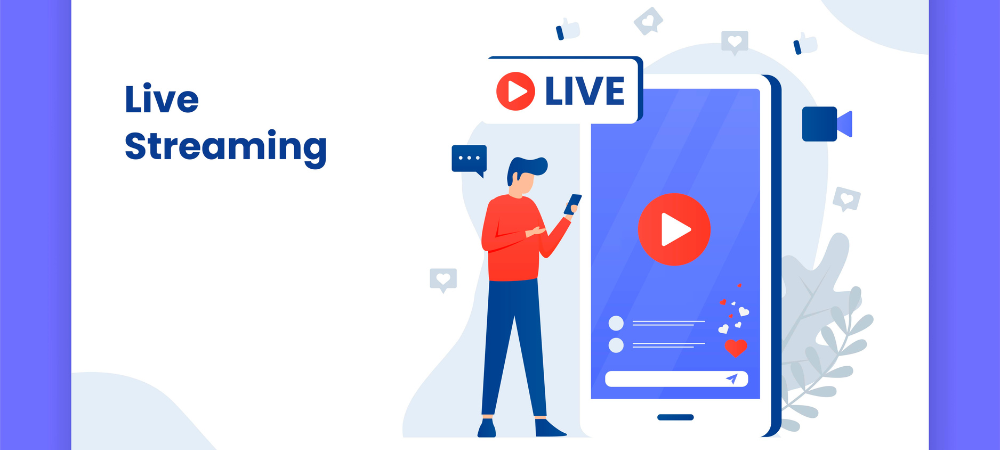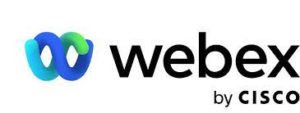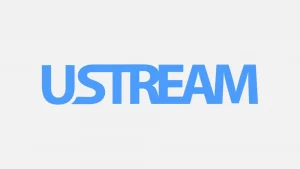Live streaming is everywhere! Whether you are a content creator looking to engage with your audience live, an educator trying to connect with your students online, or even a sports broadcaster streaming live.
Live streaming although majorly started with gamers streaming their content online and engaged with them. It has now shifted with people of different walks using it for different purposes. Teachers use live streaming to teach students from different geographical locations together online.
Table Of Content:
What is Live Streaming?
Live streaming is the real-time broadcasting of video content online. It delivers content as it happens directly to the audience through a streaming service. Live video streaming allows users to consume content in real time and users can even engage with the creator in real time as well. Live streaming is used to stream content like sports, music, and even live classes.
People stream all kinds of stuff. Video gamers stream themselves playing games, musicians stream concerts, sports fans stream games, and teachers stream classes. There’s no limit – whatever you’re into, you can probably find someone streaming about it. It’s pretty cool because it feels like you’re with the person streaming, no matter where you are.
What are Live Streaming Platforms?
Live streaming platforms enable users to stream their content online live to their audiences. Your audience can watch the content live as it happens. Content is shown unedited and shared online so that viewers can stream the content.
These websites serve as portals where live streams are hosted and can be accessed by audiences globally. They provide the necessary infrastructure to broadcast, view, and often interact with the live content, which can range from user-generated videos to professional broadcasts. The features of these platforms can include chat functions, donation options, subscription services, and more, all designed to create a comprehensive viewing experience.
Explore More ✅
With VdoCipher You Can Stream Your Content Live in 5 minutes
VdoCipher can help you stream your content live to your users. You can also engage with your audience with the chat feature.
Live Streaming Stats and Trends in 2025
In 2023 the global live-streaming market grew to $1.49 billion at a growth rate of about 20.6% (CAGR). It is further projected to grow by $3.21 billion at 21.2% CAGR. (Research and Markets)
By 2023, it’s forecasted that live video viewers in the US will reach 163.4 million. (Insider Intelligence)
Live video streaming is expected to have a revenue of $184.27 billion by 2027. (Grand View Research)
In China live streaming e-commerce is a big thing, In 2023, it accounted for about 19.24% of e-commerce sales according to insider intelligence.
Also, in the second quarter of 2022, about 7.4 billion hours of video content were streamed online by individual creators worldwide. Also, weekly streaming hours grew up to about 70% YoY.
Conviva stated that live streaming accounted for 23% of any video content viewed globally. Also, live stream generated about 27% more average watch time than on-demand video content.
Benefits of Live Streaming for Viewers
You might ask, but why even live stream any video content? Why not just record them and your users can watch them at their convenience? What live streaming does is it helps you connect with your audience on one. Allow you to engage with you and your content in real-time, any feedback or doubts can be sorted there and then, which otherwise would have taken a lot of time.
Streaming your content live can provide a lot of benefits, here are some of them:
Global Reach:
Live streaming enables you to connect to your audience globally. You can reach your audience regardless of their geographical location, all they need is a device and a decent internet connection.
Increased Engagement:
Interacting with your audience live can help you build better relationships with your audience. You can engage with them in real-time, these can be through comments, live quizzes, feedback, and more. For e-learning video platforms, this works well as students can ask questions, and doubts directly to the teacher, while the topic is being taught.
Cost-Effective:
In comparison to traditional broadcasting methods, live streaming is much more cost-effective. Anyone can stream their content live with the help of a camera and their device. You no longer need any expensive equipment to reach out to your audience.
Convenience:
With live streaming, users don’t have to travel to attend a conference. Or a student does not need to go physically to attend his classes. They can do so easily at the comfort of their home.
Real-Time Feedback:
Streaming live to your audience gives you instant feedback from users. You can use this to identify the response of your audience to your content instantly. Also, you can see if they face any challenges in a certain topic.
Monetization Opportunities:
With live streaming, you can also use various monetization models. These can be based on ads, pay-per-view, and sponsorship.
Content Longevity:
Live streams can be recorded and repurposed as on-demand content, extending the life of the original stream. For example, any live video lectures can be offered as recorded video, so that they can watch it at a later time.
Improved Analytics:
Live streaming platforms offer detailed video analytics. They provide key insights into user behavior and demographics. Also, how they engage with the content, is invaluable for content strategy and marketing.
What are some of the must-have features for live streaming?
For a successful live streaming experience, certain features are essential, both from the broadcaster’s and the viewer’s perspective. Here are some of the must-have features for live streaming:
When choosing a live streaming solution, there must be a few features that you need to look out for. These are:
High-Quality Video and Audio:
You need to be able to stream in good video quality for a good viewing experience. Similarly good audio quality is equally important for the stream.
Reliable Streaming with Minimal Buffering:
It is very important that your streams are seamless and there is no buffering. As it can degrade the viewing experience of the user.
Adaptive Bitrate Streaming:
With adaptive bitrate streaming, video quality scales up and down depending on the users internet connection. If a user has a lower bandwidth, it will show a low video quality and vice vera. This is done to make sure that there is smooth and seamless streaming.
Device Compatibility:
There are a plethora of devices your users might use to access your live stream, thus it becomes important to ensure that you video can be played on all the different devices, browsers and more.
Interactive Tools:
Tools such as live chats, Q&A sessions, polls, and reactions is important to engage with your audience. Your live-streaming platform must provide you with such tools
User-Friendly Interface:
A good UI can make or break a deal for both the viewing and broadcasting experience. It should be intuitive and easy to navigate to optimize your user experience.
Recording and Playback Options:
Recording your live videos and having them available as on-demand video is equally important. So that your users can watch it again or someone who missed the live stream can watch it at a later time.
Analytics and Reporting:
Access to detailed video analytics helps broadcasters understand their audience better and improve their content strategy.
Content Monetization Options:
Features like pay-per-view, subscriptions, or advertising enable broadcasters to monetize their content effectively.
Robust Security:
Security features like password protection, encryption, DRM, and access controls are crucial for protecting content and viewer privacy.
Customer Support and Troubleshooting:
Reliable customer support is essential for resolving technical issues promptly, ensuring a smooth streaming experience. Good customer support can help you navigate through all the errors you might face easily. So that you don’t have to spend endless hours troubleshooting.
Custom Branding:
Before choosing a live-streaming website you must get the option to customize the live streaming media player to your brand.
Accessibility Features:
Captions, subtitles, and screen reader compatibility make the content accessible to a wider audience, including those with disabilities.
For those looking to integrate live streaming directly into their WordPress website, our detailed guide on WordPress live streaming offers step-by-step instructions to get you started seamlessly.
Free vs Premium Live Streaming Platform
While choosing a live streaming platform, you might wonder if you should go for free live streaming platforms such as Twitch, Youtube live or go for Premium live streaming website. Here’s why you should choose one over the other:
Free Live Streaming Platforms (e.g., YouTube Live, Facebook Live, Twitch)
Pros:
- Cost: They are free, making them available to a wide range of users. Which can be individuals or small businesses.
- User Base: They already have large audiences, which makes it perfect for better reach and visibility
- Ease of Use: Generally user-friendly with minimal setup required, ideal for beginners.
- Integration with Social Media: Seamless integration with social media platforms, enhancing social sharing and engagement.
- Community Features: Often include interactive features like live chats, enhancing viewer engagement.
Cons:
- Limited Customization: Fewer options for branding and customization compared to premium platforms.
- Advertising: This may include platform-driven advertisements that can interrupt or distract from the content.
- Limited Control and Ownership: Less control over content distribution and ownership; platforms may have strict content guidelines.
- Basic Analytics: Analytics are often basic, lacking in-depth insights offered by premium services.
- Variable Stream Quality: Stream quality can vary, and high traffic on the platform can impact performance.
Premium Live Streaming Platforms (e.g., Vimeo Livestream, Brightcove, WebEx)
Pros:
- Advanced Features: Offer robust features like higher quality streaming, advanced analytics, monetization options, and more.
- Customization and Branding: More options for customization and branding to align with company or personal branding.
- Enhanced Security: Better security features like password protection, encryption, and more controlled access.
- Reliable and High-Quality Streaming: Typically provide more reliable streams with higher quality and less buffering.
- Professional Support and Services: Access to professional support, including customer service and technical assistance.
Cons:
- Cost: Requires a subscription or payment, which can be a barrier for individuals or small entities.
- Complexity: Can be more complex to set up and use, requiring more technical knowledge.
- Audience Building: Without an existing platform user base, it may require more effort to attract and build an audience.
- Commitment: Often requires a longer-term commitment or contract.
Free Platforms are Ideal for individual content creators, small businesses, or beginners looking to reach a broad audience without significant investment. Premium Platforms are Best suited for professional broadcasters, larger businesses, or those needing high-quality, customizable, and secure streaming services.
The choice between free and premium depends largely on the specific needs, budget, technical expertise, and goals of the broadcaster.
What are the Top Live Streaming Websites?
VdoCipher LiveStream
VdoCipher enables organizations and individuals to stream their content live globally. You can easily integrate VdoCipher’s live video streaming on your website or app in 5 minutes. You can also engage with your audiences using the authenticated and anonymous chat.
Your live streams are scalable to 100,000 viewers in a single session. Also, with a single account, you can perform 5 live streams in parallel. With the enterprise plan, you can have even more parallel streams depending on your requirements.
VdoCipher provides one-to-many live broadcasts, where a single broadcaster streams to many viewers. Live streams can be embedded on the website using the adaptive web player.
Here are some of the major VdoCipher Features:
- Chat for Viewers – Enable engagement with your users with our chat, these chats can be both anonymous and authenticated.
- API to auto start & end stream – You can automatically initiate, end, as well as manage live streams using our API.
- Automatic Recording – Your live stream is automatically recorded and saved to your VdoCipher dashboard. You can opt to embed these DRM-protected videos on your app or website.
- Connect with OBS & other tools- You can use OBS or any other broadcasting software to stream. VdoCipher provides a streaming URL and key that you can use in your broadcasting software setting. If you want know more about how to use obs studio, you can check the blog linked.
- 5 Parallel streams from the account – Run up to 5 live streams in parallel and much more with an Enterprise account.
- Screen share/Multiple screens- You can share multiple screens, and stream through multiple sources via your broadcasting software
- Latest Player & Server Tech– Our Live Streaming player is built over open source shaka player. We use Dash + HLS protocols for streaming to ensure best-streaming optimizations & experience. Each account has a dedicated streaming server.
VdoCipher recently launched Zenstream, an HD Live Streaming Solution which allows you to replay, rewind and pause your live streams with chat. Go check out Zenstream live now!
Vimeo Livestream
Vimeo is one of the most popular live streaming websites available. You can use Vimeo to live stream your content in high resolution.
With Vimeo, you can monetize your content through pay-per-view or subscriptions. They also have engagement features such as live chat, QA, and polls.
You can use your custom branding on the live streaming player, you get access to analytics, and also can password-protect your live streams. You can get real-time feedback on the success of your stream with the health monitoring feature to monitor any issues.
With Vimeo, you can also simulcast and stream on Facebook Live, YouTube, Linkedin Account, Twitch, Periscope, and more. You can stream upto 10 integrated destinations and about 20 RTMP destinations with Vimeo.
Brightcove
Brightcove Live is another popular live streaming platform being used for professional purposes. They offer high-quality streams along with features such as content management, DVR, engagement, and analytics.
With Brightcove you can manage your live streams with different models such as subscription, pay-per-view, and ads. You can also choose to use a combination of these models.
Brightcove is tailored for a variety of use cases, including live events, broadcasts, and marketing webinars. It caters to a diverse range of customers, from media companies and marketers to enterprises and organizations.
Google Meet
Google Meet is one of the most widely used live-streaming services. It is used extensively both by individual users and big organizations.
Google Meet can be used to conduct one one-on-one calls or a web conference with hundreds of people. It’s ideal for business meetings, virtual classrooms, and personal catch-ups. Google meet utilizes WebRTC streaming for low-latency and real-time communication.
With Google Meet you also get features like real-time captioning and even translated captions.
Zoom
Zoom is another popular video conferencing platform, widely used for online meetings, virtual events, classes, and webinars. It also has a live streaming feature with which you can stream to YouTube, Twitch, Facebook, and also custom RTMP destinations. These streams can be individual or you can do up to 3 streams at the same time.
Zoom doesn’t have any monetization options for live streaming. You also cannot customize the branding. Although, it has some tools like breakout rooms and virtual backgrounds to engage your audience.
Cisco Webex (Cisco X)
Cisco Webex as a live video streaming solution caters to professional and enterprise use. They promise high-security standards and high-quality video conferencing. They offer features like seamless screen sharing, interactive whiteboarding, and integration with other business tools for your live streaming websites. Webex is primarily used for meetings, webinars, and events. You can also live stream to Facebook Live, IBM Video Streaming, YouTube Live, Vbrick Rev, or any other streaming service
Ustream (IBM Cloud Video)
Ustream as a live streaming platform offers end-to-end streaming. They take care of Video hosting, transcoding, live streaming, automated speech-to-text, and analytics.
Ustream offers features like AI-driven deep video search, mobile compatible player, live chat & QA & Multi CDNs. With their Developer APIs, you can create your streaming applications, customize player UI, and analyze engagement.
Kaltura:
Kaltura as a live streaming platform majorly deals with educational institutions and enterprises. Their live streaming supports cloud transcoding, an extended DVR window. You can also do live-to-VOD archiving with a single embed code, and multi-protocol delivery.
It supports interactive video experiences and integrates with various learning management systems, making it a unique choice for academic and business environments.
ZenStream.Live
ZenStream.Live is a next-gen, professional-grade live streaming platform by VdoCipher, designed to bring HD, scalable, and interactive content streaming to the web and apps in under 10 minutes.
-
DVR-Powered Live Streaming
Viewers can pause, rewind, and replay live streams—up to 6 hours back—enhancing flexibility for sports, webinars, or events where missing a moment isn’t an option. -
Massive Scalability
Built on AWS and Google Cloud with global CDN, ZenStream.Live supports tens of thousands—even up to 100k viewers—with consistent HD playback . -
Seamless Integration
Embed with iframe and get started in ~5–10 minutes. APIs empower automation, scheduling, and management—all no-code friendly. -
Interactive Chat Support
Options for authenticated or anonymous chat with moderation tools to manage audience engagement. -
Automatic VOD Conversion
Live sessions are automatically saved as DRM-protected VOD, so you can immediately share content post-event. -
Multiple Streams & Input Tools
Run several concurrent streams per account and use OBS, vMix, Zoom, etc., as broadcast inputs. -
Adaptive Quality & Low Latency
Adaptive bitrates ensure smooth playback even on weaker networks, and latency is optimized for near real-time experience. -
Secure Domain Whitelisting
Streaming playback is restricted to approved domains, preventing content leakage
5 Platforms for Live Streaming to Stream Your Content
Live streaming has become a powerful tool for content creators, gamers, and influencers to connect with their audience in real-time. Whether you’re looking to broadcast gameplay, host a live event, or interact with followers, choosing the right platform for live streaming is crucial. Here are five top platforms for live streaming, including Twitch and similar options, each with its unique features and audience.
1. Twitch
Twitch is the leading platform for live streaming, particularly popular among gamers. It allows users to broadcast their gameplay, interact with viewers, and build a community. Twitch also offers categories for music, talk shows, and creative content, making it versatile for various streaming needs.
Twitch has a massive global audience, with over 140 million monthly active users. The platform is particularly popular among the 18-34 age demographic, making it a hub for younger viewers.
While gaming is the primary focus, Twitch also caters to niches like music, art, talk shows, and cooking. It’s a go-to platform for those looking to build a community around their hobbies and interests.
2. YouTube Live
YouTube Live is part of the broader YouTube ecosystem, offering a robust platform for live streaming. It allows creators to do live event streaming host Q&A sessions, and stream gameplay. Integration with YouTube’s vast video library makes it easy to combine live and pre-recorded content.
YouTube Live attracts a diverse audience, given YouTube’s position as the second most visited website globally. It caters to all age groups, from teenagers to adults, making it a versatile platform for streaming.
YouTube Live is ideal for creators in various niches, including gaming, education, tech reviews, live events, and lifestyle content. Its versatility makes it suitable for almost any type of live streaming.
3. Facebook Live
Facebook Live leverages the massive user base of the social media giant, allowing users to broadcast live to their friends, groups, and followers. It’s integrated into the Facebook app, making it accessible and easy to use for live streaming.
With over 2.8 billion monthly active users, Facebook Live reaches a broad audience across different age groups and demographics. It’s particularly effective for reaching an older demographic compared to platforms like Twitch.
Facebook Live is popular for community events, live announcements, Q&A sessions, and live tutorials. It’s also widely used for live shopping events and business promotions, thanks to its integration with Facebook’s business tools.
4. Instagram Live
Instagram Live is a feature within the Instagram app that allows users to broadcast live videos to their followers. It’s particularly popular among influencers and brands for its real-time engagement features like comments and likes.
Instagram Live primarily caters to a younger audience, with a significant user base among 18-29-year-olds. It’s a go-to platform for reaching Millennials and Gen Z.
Instagram Live excels in niches such as fashion, beauty, fitness, and lifestyle. Influencers often use it for live tutorials, product launches, and behind-the-scenes content to engage their followers.
5. Kick.com
Kick.com is a newer platform for live streaming that focuses on providing a user-friendly experience for both streamers and viewers. It offers low-latency streaming, interactive features, and robust community tools.
Kick.com attracts a diverse audience, including gamers, tech enthusiasts, and general entertainment seekers. Its innovative features appeal to a younger demographic, similar to Twitch.
Kick.com specializes in gaming content but is also expanding into other areas like tech reviews, live events, and creative arts. Its interactive community tools make it a strong contender for those looking to build a loyal audience.
Choosing the right platform for streaming depends on your target audience and content niche. Whether you’re a gamer, influencer, or business, these platforms for live streaming offer diverse features to help you connect with your audience. Explore these live streaming services to find the best fit for your content and community-building goals.
All In All
Live streaming platforms are now an integral part of any streaming setup, where you want to engage with your audience in real time.
FAQs
What is Live Streaming?
In Live streaming, you stream content in real-time to the viewers. This content can be sports broadcasts, game streaming, live lectures, and such
What Are the Basic Requirements for Live Streaming?
A good internet connection, camera, microphone, encoding software or hardware, and access to a live streaming platform.
Can I Monetize My Live Streams?
Several platforms offer monetization options such as ads, subscriptions, or pay-per-view models.
These models are also known as AVOD(Advertising Video-on Demand), SVOD(Subscription Video-on-Demand) & TVOD(Transaction Video-on-Demand)
What’s the Difference Between Live Streaming and Video Conferencing?
Live streaming is broadcasting to a public or private audience online, while video conferencing is when the interaction is between two or more people.
How Do I Choose a Live Streaming Platform?
You need to see if you already have an audience or if you want to build one. How do you intend to monetize your streams? Also, see if you want to monetize your streams. Based on this you can go for free or premium live-streaming
Are Live Streams Recorded?
This depends on the platform. Some platforms automatically record live streams for later viewing, while others may require you to set up recording manually.
Certain live streaming platforms give you the ability to record your live sessions and stream them at a later date.
Can I Livestream from My Mobile Device?
Yes, many platforms support mobile streaming, either through a dedicated app or a mobile-friendly website.
What is a CDN and Why is it Important for Live Streaming?
A Content Delivery Network (CDN) helps you to distribute streaming content more efficiently. This reduces latency to viewers around the world for your live streaming websites.
How Can I Improve the Quality of My Live Stream?
To improve the quality of your streams, you can use good live streaming software, a good camera, a high-quality microphone, headphones, and a stable internet connection.
How Do I Engage with My Audience During a Livestream?
Use features like live chats, polls, and Q&A sessions, and encourage viewer interaction through comments and reactions with your live streaming websites.
Can I Restrict Access to my livestream?
Many live streaming platforms offer features to restrict access, such as password protection, geographic restrictions, or private links.
Do I Need Special Software to Livestream?
Most live streaming websites require some form of encoding software, which can range from basic and free to professional-grade applications.
What is Adaptive Bitrate Streaming for live streaming and its Importance?
In Adaptive Bitrate Streaming, your video quality adjusts based on the user’s internet speed. You do it so that the user doesn’t experience any buffering issues with lower internet speed.
Supercharge Your Business with Videos
At VdoCipher we maintain the strongest content protection for videos. We also deliver the best viewer experience with brand friendly customisations. We'd love to hear from you, and help boost your video streaming business.

Head of Digital Marketing at Vdocipher. I love the art of connecting the right product to their users. When i’m not doing that i love getting lost in books.







